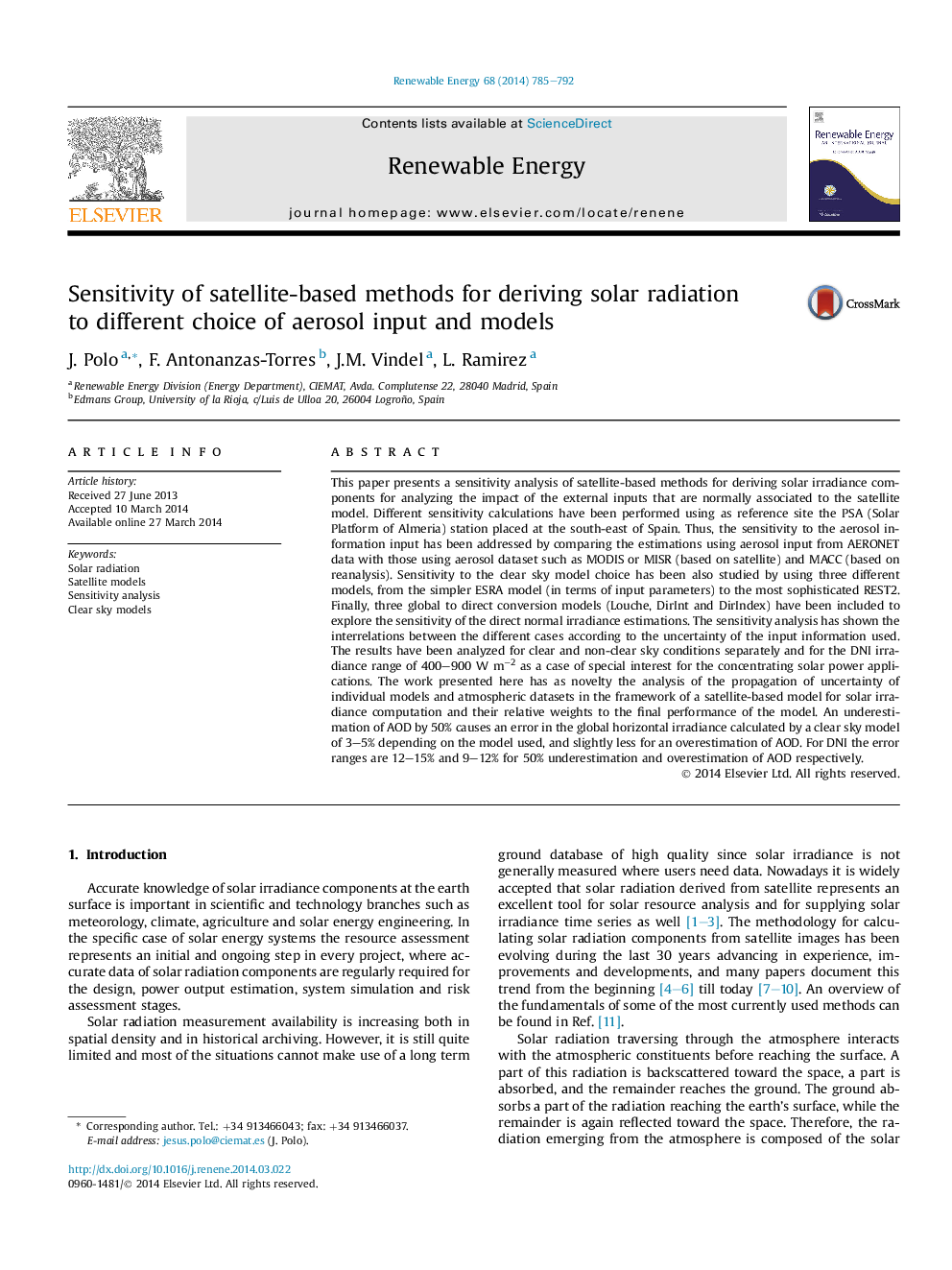| Article ID | Journal | Published Year | Pages | File Type |
|---|---|---|---|---|
| 300186 | Renewable Energy | 2014 | 8 Pages |
•Sensitivity of satellite derived solar radiation to different inputs is quantified.•Analysis of the estimations of DNI is performed in the range relevant to CSP.•Clear sky models differ substantially in their sensitivity to the error in AOD input.
This paper presents a sensitivity analysis of satellite-based methods for deriving solar irradiance components for analyzing the impact of the external inputs that are normally associated to the satellite model. Different sensitivity calculations have been performed using as reference site the PSA (Solar Platform of Almeria) station placed at the south-east of Spain. Thus, the sensitivity to the aerosol information input has been addressed by comparing the estimations using aerosol input from AERONET data with those using aerosol dataset such as MODIS or MISR (based on satellite) and MACC (based on reanalysis). Sensitivity to the clear sky model choice has been also studied by using three different models, from the simpler ESRA model (in terms of input parameters) to the most sophisticated REST2. Finally, three global to direct conversion models (Louche, DirInt and DirIndex) have been included to explore the sensitivity of the direct normal irradiance estimations. The sensitivity analysis has shown the interrelations between the different cases according to the uncertainty of the input information used. The results have been analyzed for clear and non-clear sky conditions separately and for the DNI irradiance range of 400–900 W m−2 as a case of special interest for the concentrating solar power applications. The work presented here has as novelty the analysis of the propagation of uncertainty of individual models and atmospheric datasets in the framework of a satellite-based model for solar irradiance computation and their relative weights to the final performance of the model. An underestimation of AOD by 50% causes an error in the global horizontal irradiance calculated by a clear sky model of 3–5% depending on the model used, and slightly less for an overestimation of AOD. For DNI the error ranges are 12–15% and 9–12% for 50% underestimation and overestimation of AOD respectively.
